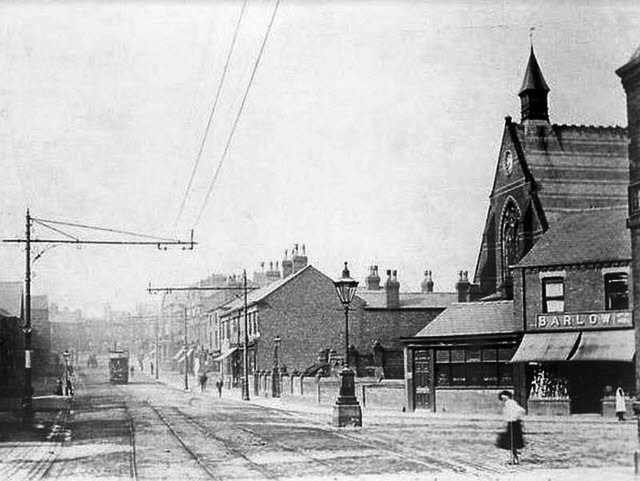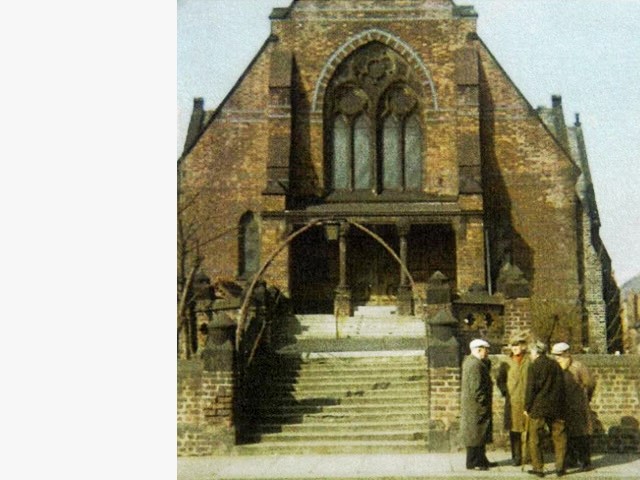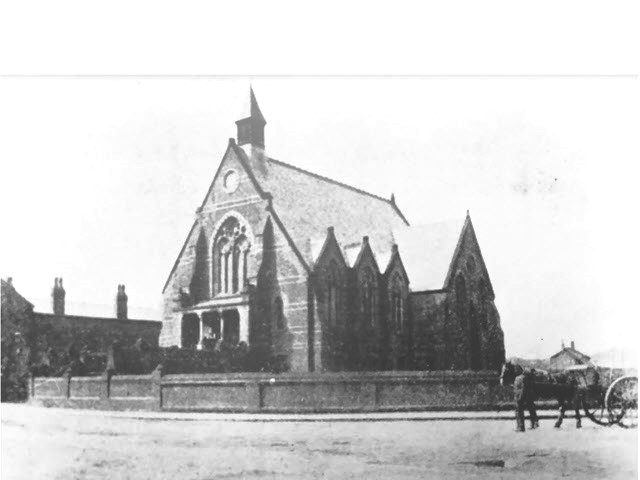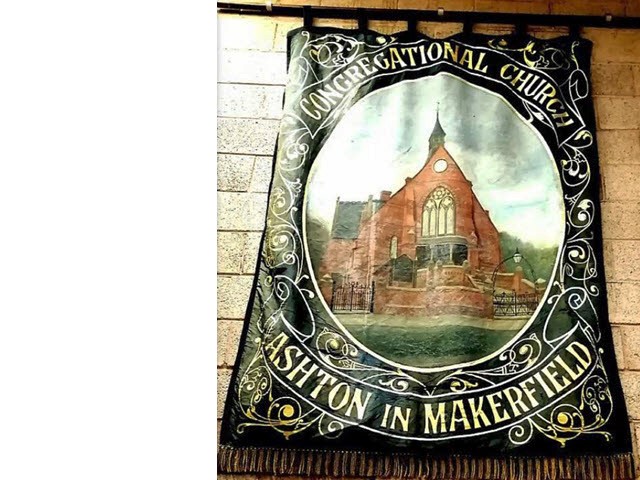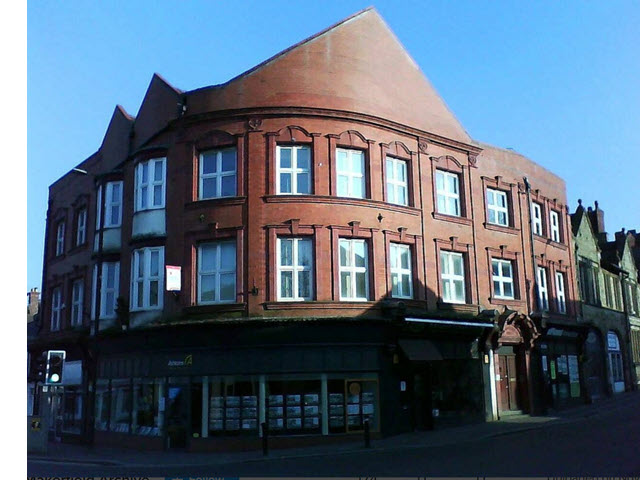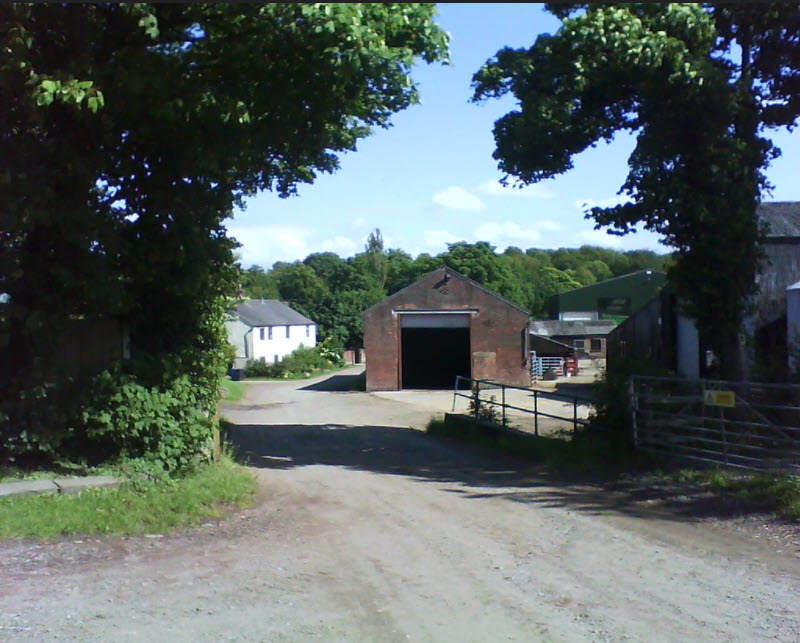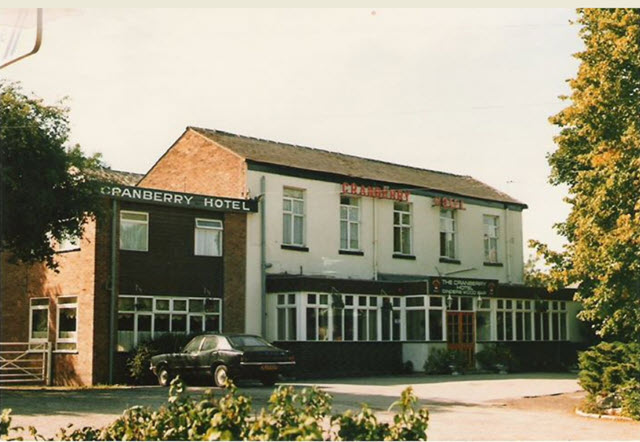Congregational Chapel
Gerard Street,, Ashton
Part of Group:
At Risk: No
Description
Built in 1865-7 by George Harris of St Helens, to designs of the renowned Victorian architect Alfred Waterhouse, with funding provided by brothers Joseph and Josiah Evans of the Haydock mining family.
A description accompanied The Wigan Observer's report of the formal opening on 9 April 1867:
“The chapel stands on the banks of the stream which crosses the main street of the town, just at the junction of the Wigan road with the main thoroughfare...
It is built of red bricks and stone from a Cheshire Quarry near Rock Ferry, and it consists of a chapel and vestry, with a fine school-room beneath. The entrance is by a flight of stone steps from the street, and then a pathway leads to another and smaller flight, giving access to the portico, the roof of which is supported by two small columns.
Above this the most prominent object is a fine Gothic window, which, like the other windows round the building, is adorned with handsome tracery, and with which the portico seems to harmonise.
Passing through the vestibule, which is formed by a screen of glass and woodwork, we reach the interior of the chapel... It consists of a nave 66 feet in length by 42 in width, and 35 feet high to the ceiling; of two transepts, each 22 feet by 10 feet, and cut off from the nave by two small arches, separated by a pillar, and of a pulpit recess, on one side of which is the vestry and on the other a place for the choir.
There are three two-light windows on each side of the nave, and two in each of the transepts, and these, as well as the one over the entrance, are filled with cathedral glass of two shades, from the manufactory of Messrs Pilkington of St Helens.
The roof is open, with arched ribs springing from moulded corbels. The ceiling between the principals is divided into five bays of twenty panels, which have very neat floral decorations. The dimensions of the pulpit recess are 18 feet by 8 feet; it is divided from the nave by an arch springing from moulded corbels, and surrounded by tasteful ornamentation, which encloses the words, “Grace is the mystery of Godliness”, and “God was manifest in the flesh”. Inside the recess also the wall is neatly adorned, and the words “I am the true vine”, “I am the bread of life”, and “I am the light of the world” run round the upper portions.
The organ chamber is about 12 feet square, and is lighted by a plain three-light window; the vestry, at the other side, is near the same size. The seats, which are of pitch pine, are all open, and will accommodate over 500 persons; and the pulpit, which is supported by a base, to which it is bracketed, is of the same wood.
The chapel is lighted at night by six nine-light standards in the nave, and the transepts and pulpit recess are also lighted with brackets. It is heated with Haden's patent apparatus. The school-room below is of the same dimensions as the chapel, and is a spacious and airy room, about 14 feet in height, with a boarded floor, which is a few feet below the level of the highway”.
Later adornments included stained glass windows in memory of Josiah Evans (1882), Ellen Latham (1888), the fallen of the 1914-18 war (1923, altered in 1947 to incorporate the names of the fallen of WWII) and members of the Aspinall and Latham families (1938), and a clock in memory of Charles Latham (1887).
Owing to structural problems the Gerard St building was demolished after a final service there on 6 May 1973. The Sir Thomas Gerard pub now occupies the site.
Text and images provided by the Makerfield Rambler.

